South Park and The Greatest TV Contract Clause Ever
Matt Stone and Trey Parker became billionaires by making 27 seasons of the funniest shows ever (and signing a first TV deal with an improbable clause).
Thanks for subscribing to SatPost. Hope you all have had a great summer. I’m back on the keyboard after some travels with the family.
Today, we will talk about the fascinating business history behind South Park.
Also this week:
Harvard’s $600m Exec Degree Status Business
Was GPT-5 a flop or not?
…and them wild posts (including the Slopbowl recession)
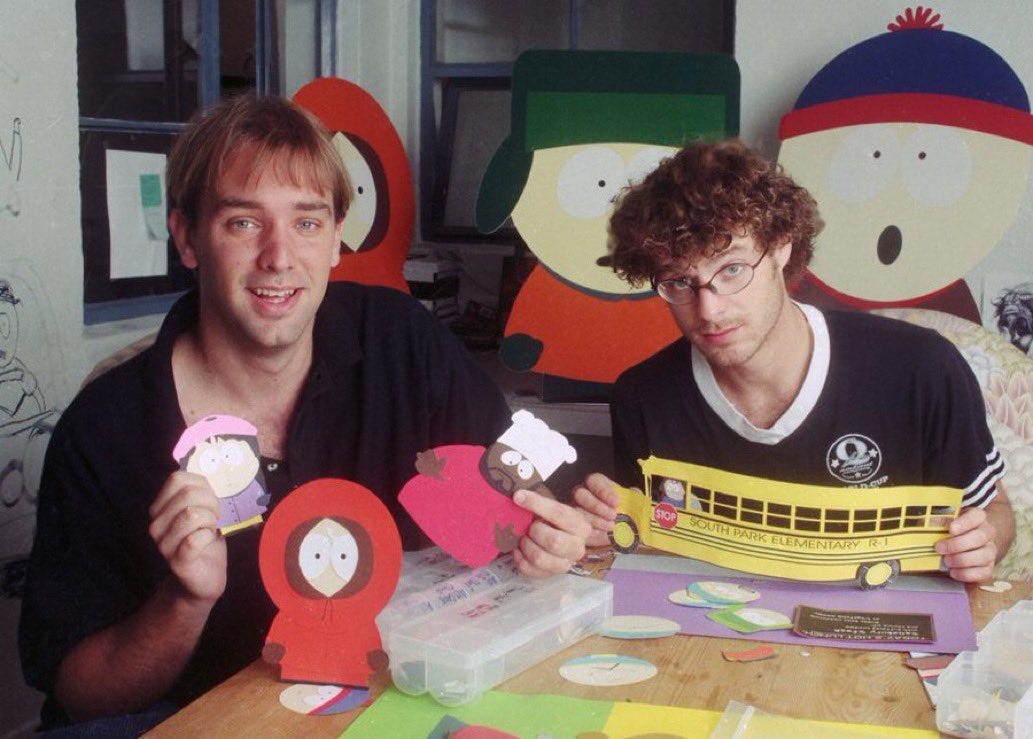
The legendary South Park guys have officially joined the Tres Comma Club, with Matt Stone and Trey Parker each worth $1.2B per Forbes.
Stone and Parker are also officially the first billionaires to have ever previously shown up at the Oscar’s high on acid after taking an LSD sugar cube while wearing designer women dresses.
They hit this financial milestone after signing a development deal with Paramount (which recently merged with Skydance Media in an $8.4B deal) and a $1.5B exclusive streaming agreement with Paramount+ (which has mostly been a vehicle for Taylor Sheridan projects but did just add UFC rights for $7.7B over 7 years).
Naturally, South Park kicked off its 27th season last month by poking fun at all of these backroom negotiations (and also relentlessly going after the Trump White House).
Since debuting on Paramount’s Comedy Central in 1997, the duo have always been able to tap into (or set) the cultural zeitgeist with their iconic animated show about four school kids telling infinite fart and dick jokes.
They are “equal-opportunity offenders”, stirring up controversy with their willingness to troll anyone and anything. Unlike other long-running animated hits such as The Simpsons and Family Guy — which have changed from the original creative teams— South Park is still Parker and Stone writing, producing and offending.
While their bottomless supply of creativity is the foundation of their success, Stone and Parker also made a fortune because of fortuitous dealmaking.
Some was luck. Some was ballsy. All of it was betting on themselves.
Oh, they also may have signed the most valuable (and improbable) TV contract clause ever, which ultimately entitled them to 50% of South Park’s digital revenue.
Let’s walk through this business history:
An Improbably Valuable TV Contract Clause
A 50/50 Digital Deal and Smartly Using Debt
Getting Paid With By The Streaming Revolution
An Improbably Valuable TV Contract Clause
Trey Parker was born 1969 while Matt Stone was born in 1971.
Both grew up in suburbs outside of Denver, Colorado.
After high school, Parker went to Berklee College of Music but transferred to the University of Colorado Boulder to study Japanese and Film. Stone also enrolled at the University of Colorado Boulder with a focus on Math and Film.
Take a wild guess on how they met in 1992.
It wasn’t in the seminar course for the History of Japanese Mathematics (actually a pretty interesting topic, though, since Japan was sealed off from the world for centuries and did develop its own mathematics in Edo Period around 1600-1800…but I digress).
Yep, it was the Film class where they bonded over their love of Monty Python and shared very similar senses of humour, as Parker explained in an oral history of South Park:
When you’re in the film school, you’re working on someone’s film every weekend, so you’re spending your weekends on set. Matt and I would always end up either running cameras or running sound or something. Shoots are so f--king boring, and we would just sit there doing voices for each other — that’s where it actually started.
We would always talk like these little kids and make each other laugh. So we had a year of doing little skits with the voices before we shot anything. The film department showed student films at the end of the semester. I was like, “There should be something Christmassy,” because these screenings were a few days before Christmas. I had done one even before that, called American History, with construction paper cutouts, and I got a student award for it. So Matt and I just did this little Jesus and Frosty thing.
[The audience reaction] was huge. It was just the fact that there were little-kid voices and cute animation and that they were screaming, “F---!” People hadn’t really seen anything like that before. It was mostly college kids, so we knew our audience. At the time, we were just trying to do something that all our friends and college buddies would think was funny.
After graduating in 1993, Stone and Parker drove to LA with the goal of breaking into Hollywood. They bummed around on couches and scratched together savings. One project they worked on was Cannibal! The Musical, a Western black comedy directed by Parker and starring the two friends.
Through a screening of Cannibal! The Musical, they met a producer at Fox named Brian Graden and he asked if they had worked on anything else. When Graden saw their short animated “Jesus vs. Frosty” (aka “Spirit of Christmas”), he absolutely lost it. This shit was so good and different. Graden copied the film onto dozens of VHS tapes and sent it to friends.
“Jesus vs. Frosty” already had the look and seeded the idea for characters that would become mainstays in South Park. Soon, the trio started fleshing out an idea about four kids growing up in a Colorado town getting into absurd situations.
“When I got to know Trey, it became clear he had worlds in his head,” remembers Graden. “And this was a world, if not fully developed, that was in his imagination and was based in large part on being a boy growing up in snowy Colorado.”
With the holiday season rolling around, Graden gave $2,000 to Parker and Stone to make another “Spirit of Christmas” film. Their second entry in the series was based on “Jesus vs. Santa”.
According to Parker, the response to the 1995 version of “Spirit of Christmas” was nuclear:
The whole thing went viral before anyone really even knew what viral meant. Brian’s friends loved it so much that they were copying VHS-to-VHS and then giving it to friends. We heard a rumor that George Clooney has had it copied like 300 times. Then months went by. And then we were at a party and these guys were like, “You guys have got to see this!” They made everyone gather around the TV and played “The Spirit of Christmas.”
Matt and I are like, “Dude, we made that.” And they’re like, “No, we know the guys that made this — and they just got a meeting with MTV.” We’re like, “What?!” Brian went to MTV and said, “No, no, these are the guys who made it.”
And then we were like talking to people in New York and they were like, “You’ve got to see this Christmas thing.” We’re like, “Dude, we made that!” It was the most surreal thing. We were at bars trying to pick up girls and being like, “We’re the guys that made ‘The Spirit of Christmas.’” We were kind of like little rock stars.
Despite the early virality, Stone and Parker still had trouble closing a deal on their South Park show idea. The choppy animation and crude sense of humor wasn’t an obvious match for network TV.
Fox has great success with animated shows (The Simpsons) but South Park was too edgy.
MTV also had its own animated hit (Beavis & Butthead).
Ultimately, Comedy Central took the swing with Parker an Stone. The relatively young and small cable TV channel had much less to lose and commissioned a pilot episode.
What did Parker and Stone do when given a chance to break into TV?
Did they play it safe? HAHAHHAHA, of course not.
Their first full TV episode was called “Cartman Gets an Anal Probe” and it took 3-months to make using their construction paper stop-motion method.
The pilot performed poorly during a focus group but Comedy Central head Doug Herzog felt Stone and Parker had the juice (especially as their “Spirit of Christmas” films were slowly going viral on early internet sites).
Stone and Parker agreed to a 10-year contract with Comedy Central and their lawyer negotiated a “killer deal point”, per a 2007 New York Times article:
Comedy Central’s boilerplate reserved to the network any income generated by the show through other network divisions. But the pair’s lawyer, Kevin Morris, insisted that any South Park revenue not derived specifically from broadcast on the cable channel would go into the pot for calculating the men’s share of back-end profits.
In the decades since, revenue derived outside the cable channel has proven to be quite juicy. We’ll look at the math in a later section and it wouldn’t be hyperbolic to say that Morris negotiated probably the most improbably valuable contract clause in TV history.
But first: South Park’s “Cartman Gets an Anal Probe” premiered on August 13th, 1997. The episode clocked over 1 million viewers. I repeat, over 1 million viewers who had never heard of a show called South Park watched “Cartman Gets an Anal Probe”.
Trey and Stone transitioned from construction paper to computer animation after the pilot episode (and it has stayed that way).
The show’s momentum kept going all the same.
"I came from MTV,” Herzog says in the oral history. “South Park took off quicker, faster, and with more impact than any sort of rock band or music act that I’d ever seen. It took off like a rocket. And it got an immediate, incredible critical response.”
By the 2nd season, South Park was pulling in ~6m viewers an episode and was one of cable TV’s most popular show.
A 50/50 Digital Deal and Smartly Using Debt
Let’s fast forward to the first week of January 2007.
Two announcements in that period are solely responsible for 98.6% of time wasted: Steve Jobs launched the iPhone and Reed Hasting said Netflix would start its streaming option.
Meanwhile, Google had acquired YouTube for $1.65B two months earlier.
Back in TV land, South Park had cranked out ~150 episodes and — along with Jon Stewart’s first run with The Daily Show — had turned Comedy Central into real player.
But the cable TV business was very near its peak. Video was clearly moving online and that “killer deal point” in South Park’s original contract meant Parker and Stone were about to get capital-P Paid.
Some details per the aforementioned NYT article:
[A cut of revenue not derived specifically from broadcast on the cable channel] was meaningless at first, but it has taken on huge significance of late, Mr. Morris said.
As [Comedy Central owner] Viacom struggled to change into a digitally nimble media company — making a failed bid for MySpace in 2005, suing Google and YouTube [in 2007], and striking a retaliatory deal with Joost — the exploitation of South Park was subject to this nettlesome requirement…Both the show’s creators and the network, therefore, stood to gain if it became easier to sell the show digitally.
With negotiating leverage, Parker and Stone agreed to a 4-year $75 million deal and, separately, a 50/50 cut of advertising revenue for any digital property…in perpetuity.
Such a wild twist.
Incredible that Comedy Central agreed to that clause.
But why not? It was meaningless! Non-TV revenue was without meaning.
“Wait Trung, what about VHS, DVD and merchandise?”
Fair point. Those revenue streams were a known quantity back in 1997 and my best guess is that Parker and Stone received a market rate for first-time deals (don't @ me, unless you do know the full deal terms, in which case please @ me).
Digital was a different beast and the new agreement led to the launch of South Park Studios (a website that offered the show’s catalog for free online).
The decision accomplished a few strategic goals:
Piracy: South Park clips were frequently ripped for YouTube. Along with music, this stolen content was a major sticking point for Viacom and YouTube. Viacom sued YouTube for $1B in 2007 for infringing on copyright content from Paramount films as well as Comedy Central, MTV and Nickelodeon. In 2014, the Google-owned service eventually settled with the network and rolled out ContentID, YouTube's system to allow copyright owners to identify and manage their copyrighted material on the platform.
Digital Monetization: Viacom had a legit online play while Parker and Stone had a new income stream.
In 2012, Parker and Stone founded a production studio named Park County, which was named after the real-life area that the show South Park takes place.
They put all of the income from their projects into the new company including film, TV and broadway (The Book of Mormon play came out in 2011).
The terms of their 2007 renewal — particularly the steady income from digital ads — created a foundation that allowed them to finance future projects without having to give up ownership in Park County.
Instead, Parker and Stone took on debt and “bet on themselves” as explained by Matt Craig in a recent Forbes piece:
[Park County as a studio is] a common corporate structure among Hollywood’s top earners, but unlike other companies such as Reese Witherspoon’s Hello Sunshine or Brad Pitt’s Plan B Entertainment, Park County has never taken on equity partners or investors.
Instead, in 2012, Parker and Stone leveraged the existing and projected future income generated by South Park and other projects to score $60 million in convertible debt funding from media-focused merchant bank The Raine Group. As long as they paid off the loan on time, they would keep all of the equity.
Sure enough, they kept all the equity and those stakes in Park County soon exploded in value when another “digital” revenue stream took off: streaming.
Getting Paid By The Streaming Revolution
While TV viewership shifted from the small screen to streaming in the 2010s, the most sought after type of content remained the same: popular shows with deep catalogs that could attract new subscribers and reduce churn.
The industry has seen a multiple $100m+ deals for TV shows to help streamers prop up their platforms.
Seinfeld flipped Hulu and Netflix.
The Office flipped Netflix and Peacock.
Friends flipped between Netflix and HBO Max.
Big Bang Theory and Ricky & Morty were woo’d to HBO Max.
The Simpsons arrived on Disney+ as part of Disney’s $70B+ acquisition of Fox.
Naturally, Park County cashed in with South Park:
2014: Hulu licensed the streaming rights for a total of $197.5m over 5 years.
2019: HBO Max spent $550m for US streaming rights over 5 years.
2021: Paramount agreed to a $935m development deal over 6 years for Stone and Parker to keep creating TV episodes and 14 South Park films.
2023: Park County negotiated an $800m line of credit from private equity giant Carlyle with a plan of retaining as much equity as possible for any future flip.
Then, the motherlode came in July 2025. David Ellison — founder of Skydance Media and son of 2nd richest person in the world Larry Ellison — was trying to close an $8.4B merger with Paramount.
South Park was one of Paramount’s most important assets and everyone knew they had to get paid. When negotiations hit a snag, the South Park X account posted a message from Stone and Parker: “This merger is a shitshow and it’s fucking up South Park. We are at the studio working on new episodes and we hope the fans get to see them somehow.”
Celebrity Net Worth has details on the back-and-forth and, in the end, Paramount backed up the Brinks truck with two deals:
Streaming: Paramount+ paid $1.5B over 5 years to exclusively stream South Park’s 300+ episode catalog.
Development: Parker and Stone were guaranteed a minimum of $250m a year to make 50 new South Park episodes through 2030.
Here’s a wild what-if: in 2019, Paramount considered buying Park County for $1B but the lawyers and bankers were too busy dealing with the merger between Viacom and CBS. The boat sailed and Paramount ended up signing that $935m development deal in 2021 that only lasted 5 years.
In hindsight, not buying Park County for $1B was the M&A equivalent of getting an anal probe (especially since the company added the iconic Casa Bonita restaurant and a future film with Kendrick Lamar to the stable).
Let’s run the Park County math in the streaming era. The studio claims 1/2 of the streaming rights, which works out to $1.1B (1/2 of $198m + $550m + $1,500m) and receives all of the development funds totalling $2.2B ($935m + $250m/year for 5 years).
Park County pays Stone and Parker each $10m a year and keep the rest of the income within the corporate structure, which allows for some more savvy financial moves.
“Using the cost of the debt and some clever Hollywood accounting around depreciating catalog value, Park County has been able to lower and delay its tax bills considerably,” writes Matt Craig.
Craig estimates the enterprise value of Park County at $3B and the duo’s equity stake at $1.2B each.
In a separate podcast, Craig places Parker and Stone among the most financially successful TV acts ever and why it’ll be hard for future creators to replicate:
I think no one from the current coming-of-age class in TV will reach billionaire status unless something really really drastic changes. That's just how the landscape has changed. The way you become a billionaire [in TV] is through ownership.
So, you think about Tyler Perry. He owns his studio in Atlanta and he owns all his shows and then they get licensed to BET.
You think about Dick Wolf. He has a 50/50 joint venture with Universal Television where he has he owns 50% of his shows and then he's able to slice up the pie from there and he wants to do it.
Oprah owns Oprah Winfrey network and became a multi-billionaire.
Jerry Seinfeld [and Larry David] owned a much smaller slice of the of the pie but owned a slice of profits in Seinfeld. Seinfeld was a runaway hit in syndication and remains massively popular to this day.
That is how people got really really rich in the 80s and 90s. Even in the early 2000s. It was through profit participation.
When the streaming revolution happened, those deals changed drastically because if a show was getting created and put on Netflix, it is not going to syndicate out anywhere else. It's going to remain on Netflix forever. So, it will not be sold over and over and over again. In theory, there are not profits in the same way that can be divided up.
So, the way that dealmakers, agents, managers and lawyers renegotiated deals for their talent was that we're going to just take more money up front guaranteed. But we don't have that hope of a giant home run on the back end.
[Even] someone like Taylor Sheridan, who has several hit shows and has an empire of shows, doesn't have that same sort of back-end ownership in the same way.
The major difference with the South Park guys is that the other major TV hitters scored the fattest terms after they had already established themselves. For obvious reasons, none of them received “50% of digital revenue in perpetuity” on their first deal.
Parker and Stone’s streaming riches are due to that seemingly irrelevant deal point in that initial 1997 contract.
“A cut of revenue not derived specifically from broadcast on the cable channel” went from “meaningless” to “huge significance” to “boner-inducing” arguably the greatest clause ever in TV contract history…at a minimum, it’s one of the most improbable all things considered.
Final Thoughts
There’s an incredible 42-minute documentary (“6 Days To Air: The Making of South Park”) that details the South Park creative process.
The title refers to how Stone and Parker grind out each episode in 6 days, which is ludicrous based on the fact that typical animation episodes take 6+ months to write and create.
They don’t have backlog of ideas to work through. Rather, they spend about 1/2 the year when the season is on and mine the news cycle each week anew. It’s similar to SNL, with many episodes completed within mere hours of Comedy Central’s deadline.
In the documentary, Stone analogizes the making of a new TV season to a band getting back in the studio to make an album (side note: Stone readily admits that South Park stories are “expressed completely through Trey” and that Parker is the “chef”. But Parker needed a partner like Stone to reach his full potential).
They’re schedule is brutal schedule, but the creative pay off is worth all the pain.
Stone and Parker joining the Tres Comma Club is just a signpost in their creative journey. A very profitable signpost but still just a signpost because their end goal has never changed.
Make people laugh by joking about anything and anyone.
“We’ve been rich for a long time,” Stone told Bloomberg after signing the $935m development agreement with Paramount in 2021. “Even this giant deal won’t change my day-to-day. I’m not going to buy a new watch. We’re a media company. We use proceeds from this to invest. These are multi-year projects we invested a bunch of money in.”
The latest deals just mean the South Park guys are going to keep doing South Park guy things. Probably no more LSD-sugar cubes at the Oscar’s but definitely more entries in the Wikipedia page for “South Park Controversies”.
For more weekly business breakdowns of media and tech stories, smash that subscribe button:
Harvard’s $600m Exec Degree Status Business
One of the biggest red flags on LinkedIn is when you see “Harvard University” in someone’s profile bio and then scroll down to the education section to find that they have some Harvard Executive Education certificate (almost without fail, this same person that did a TEDx speaking event and say “gave a TED Talk”).
Harvard has been at the centre of various culture wars in recent years but the brand is still platinum for signalling to large swathes of the professional world.
We know this because Harvard executive education courses are absolute money printers, per Bloomberg:
Overall, executive education and continuing education for nontraditional students [at Harvard] delivered nearly $600 million last year, up from $155 million two decades ago, publicly available data from the university shows. […]
The proceeds from continuing and executive education programs accounted for 9% of Harvard’s $6.5 billion operating revenue base in 2024, its financial report shows. By comparison, federal research money accounted for 11%. The programs made up 42% of the school’s net tuition and fee revenue in 2024, up from 26% in 2005.
Nearly half of those funds come from Harvard Business School-related programs:
Harvard non-degree courses range from short-term certificate programs to in-person, long-term training for executives and senior professionals. They can bring in anywhere from several hundred dollars to more than $10,000 per student. One multiyear Harvard Business School program can cost as much as $150,000. […]
Executive education was the second-biggest source of revenue at Harvard Business School last year, bringing in $245 million. Online education fetched another $70 million. The business school has about 42,000 executive education students enrolled on the web, more than double the level in 2019.
As with any luxury brand, it is very important to balance the revenue opportunity while making sure not to dilute the brand.
Ferrari and Hermès have mastered the balance. Comparatively, Porsche and Louis Vuitton have diluted the brand a bit too much and this shows up in the relative stock performances.
With Harvard battling the Trump administration over federal funding — which is ~10% of operating budget — the school really needs that exec education income. Even though it has a $50B+ endowment, it doesn’t want to be forced to unload illiquid investments. This is also why Harvard has tapped debt markets (where it gets very favourable interest terms because of its brand and financial firepower).
To be honest, I tried tapping into the Harvard halo. In the mid-2010s, I worked for a FinTech firm based in Harvard Square. The status ooze piqued my interest and I applied to a one-year Master's program at Harvard. Mercifully, Harvard told me to kick rocks and my next most rationale move was to just POOOOOOOASSSSSTTT online.
Things worked out.
Anyway, expect more LinkedIn folks claiming they “went to Harvard”…which, honestly, isn’t as bad as people who actually went to Harvard undergrad but practice faux humility by doing that thing when they somehow maneuver a conversation so the topic of secondary education comes up and then hit you over the head with “I went to a school in Cambridge near the Charles River”.
This issue of SatPost is brought to you by Bearly AI
Are you looking for a no-logging, encrypted and anonymized AI chat tool?
Then, try the Bearly AI research app, which provides an easy-to-use UX to access leading models from OpenAI, Anthropic, xAI, DeepSeek, Gemini and more.
While some AI providers keep chat logs indefinitely even after a user deletes them...Bearly AI has a default no-logging policy and user chats are encrypted while requests to LLM providers are completely anonymized.
If you're looking for AI chat privacy, get access to leading LLMs and try one month FREE of the Pro Plan using the code BEARLY1.
Links and Memes
Some other links for your weekend consumption:
Paramount Skydance’s $7.7B Deal With UFC: The first 45-minutes of this Bill Simmons podcast has some great takes on David Ellison buying American rights to exclusively air UFC events on Paramount+:
It was a lot of money. The previous UFC deal with ESPN was between $250m to $500m a year. Now, Paramount is paying UFC $1.1B a year. UFC is losing pay-per-view options but just got paid.
UFC’s Dana White probably wanted Netflix or ESPN to acquire the rights. These are just much larger media brands. ESPN’s social presence is 10x larger than Paramount’s brands. But Ellison clearly wants to make a splash after merging Skydance and Paramount.
Netflix and Disney+ (which bundled in Hulu and some ESPN content) have become the must-have streaming services. Paramount+ — with all of the Taylor Sheridan shows, South Park and UFC — is positioning itself as the Bro-Dude-Guy streaming service.
As someone with one foot in the Bro-Dude-Guy demographic, it’s not the worst positioning. Either way, Paramount Skydance’s stock jumped 25%+ on the UFC news.
***
Taylor Swift’s First Podcast Appearance Ever was on New Heights…which is obviously co-hosted by her boyfriend Travis Kelce and his brother Jason Kelce. The episode started as a livestream and crashed YouTube with a pretty unheard of 1.3m concurrent views (after 24 hours, the episode had ~15 million views).
It’s a solid 2-hour listen tbh:
Taylor’s dad Scott knew Kansas City Chiefs coach Andy Reid quite well and Coach Reid put in a good word for Travis.
Taylor gave insight on how she structured the Eras tour. She wanted to weave in elements of opera, Broadway and ballet. But, knowing her audience, she wanted to make sure they saw something “new every 15 to 30 seconds and so it feels like you're scrolling in an algorithm.”
There’s a great segment where she talks about getting back the master rights on her first few albums. One piece of leverage she had created was re-recording her albums (“In my [original] contract, they didn't put a clause in that said I couldn't re-record because nobody was doing it and nobody thought that was a good idea, right? Who would be that stubborn?”).
Best line was talking about the re-records and she appreciated all the fans and collaborators that said “We Ride At Dawn” to support her.
***
Was GPT-5 a flop or not? It’s been over a week since OpenAI released its new model and some narratives have crystallized. At a top level, ChatGPT has reached such scale (700m+ users) that any update will piss people off. GPT-5 mostly made people mad:
by not being a massive leap like the previous models (GPT-3, GPT-4 and the o1 reasoning models were all noticeably more useful than previous iterations)
deprecating older and friendlier models that people relied on for life and therapy advice (that main model was GPT-4o, which had much more personality and the outcry was so loud that Sam Altman backtracked and reinstated the model for paying users and promised to give advance warning if he were to nuke it again)
throttling usage (instead of a spaghetti soup of options, OpenAI simplified its model into the unified GPT-5 interface…to do so, it routes queries to the correct model but the routing system is still a work-in-progress and many users believe this routing system really is to save on token costs)
OpenAI has joined the hall-of-fame of Big Tech firms annoying their loudest users along with “Facebook unveils Newsfeed” or “iPhone has Liquid Glass” or “Netflix nukes shared passwords” and “Microsoft Teams Exists”.
Much like these other annoyances, the party keeps going. In OpenAI’s case, what that means is that a larger % of the 700m+ user base — many of which are on the free plan — will finally get access to OpenAI’s reasoning models. Before the unified GPT-5 interface, these free users had no idea how smart the model had become. And, since ChatGPT is the biggest consumer AI breakout product, this is a long-term win for the company in terms of usage and mindshare.
With that, here are a bunch of relevant links:
“GPT-5: Overdue, overhyped and underwhelming. And that’s not the worst of it.” (Gary Marcus)
“GPT-5: It Just Does Stuff” (Ethan Mollick)
“OpenAI burns the boats”…by reducing the cost of GPT-5 tokens and trying to take out Anthropic’s margins on its Claude Code tools. OpenAI can do this because it’s going to eventually turn ChatGPT into an advertising juggernaut and doesn’t need its coding API to be profitable. (Ethan Ding)
“GPT-5 Set the Stage for Ad Monetization and the SuperApp”…and creating the unified GPT-5 interface along with a query routing system were key steps in that direction (Semi-Analysis).
As for the GPT-5 memes, the most viral ones all focussed on the personality change between GPT-4o and GPT-5.
…and here some memes (including this first one which correctly identifies why leading fast-casual Slopbowl chains — Chipotle, Cava, SweetGreens — are seeing a notable slowdown in growth with people realizing they can make bowls of slop at home):


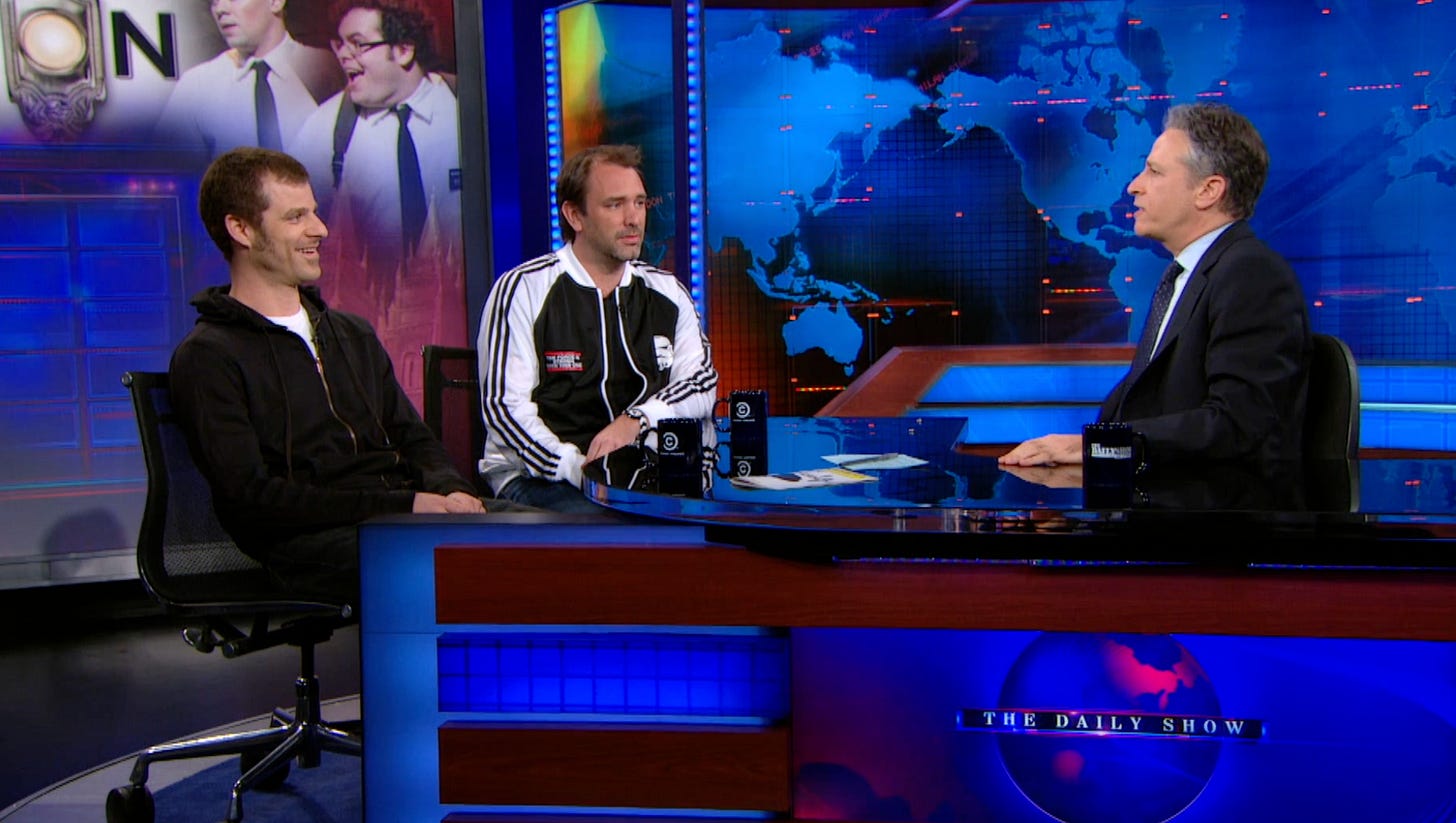
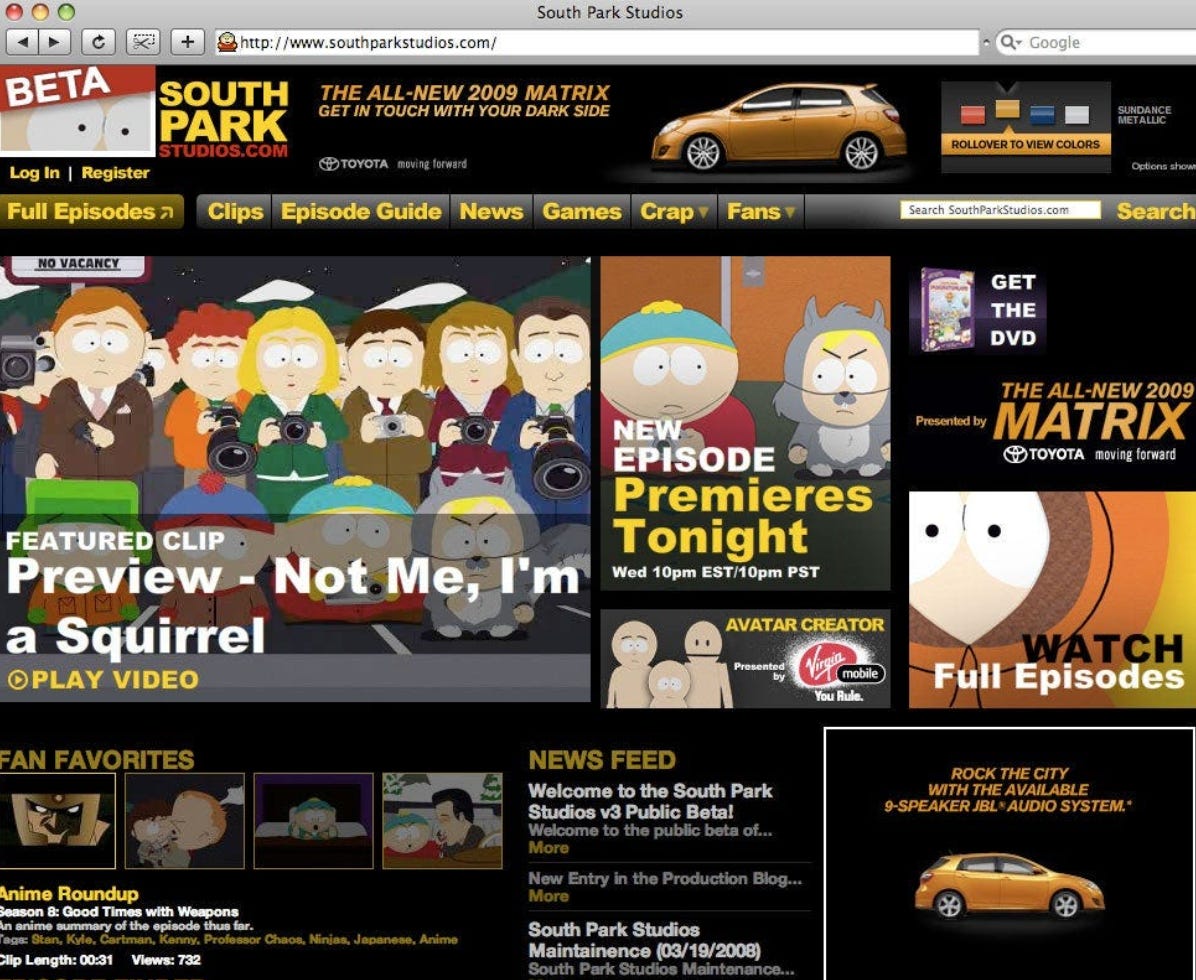
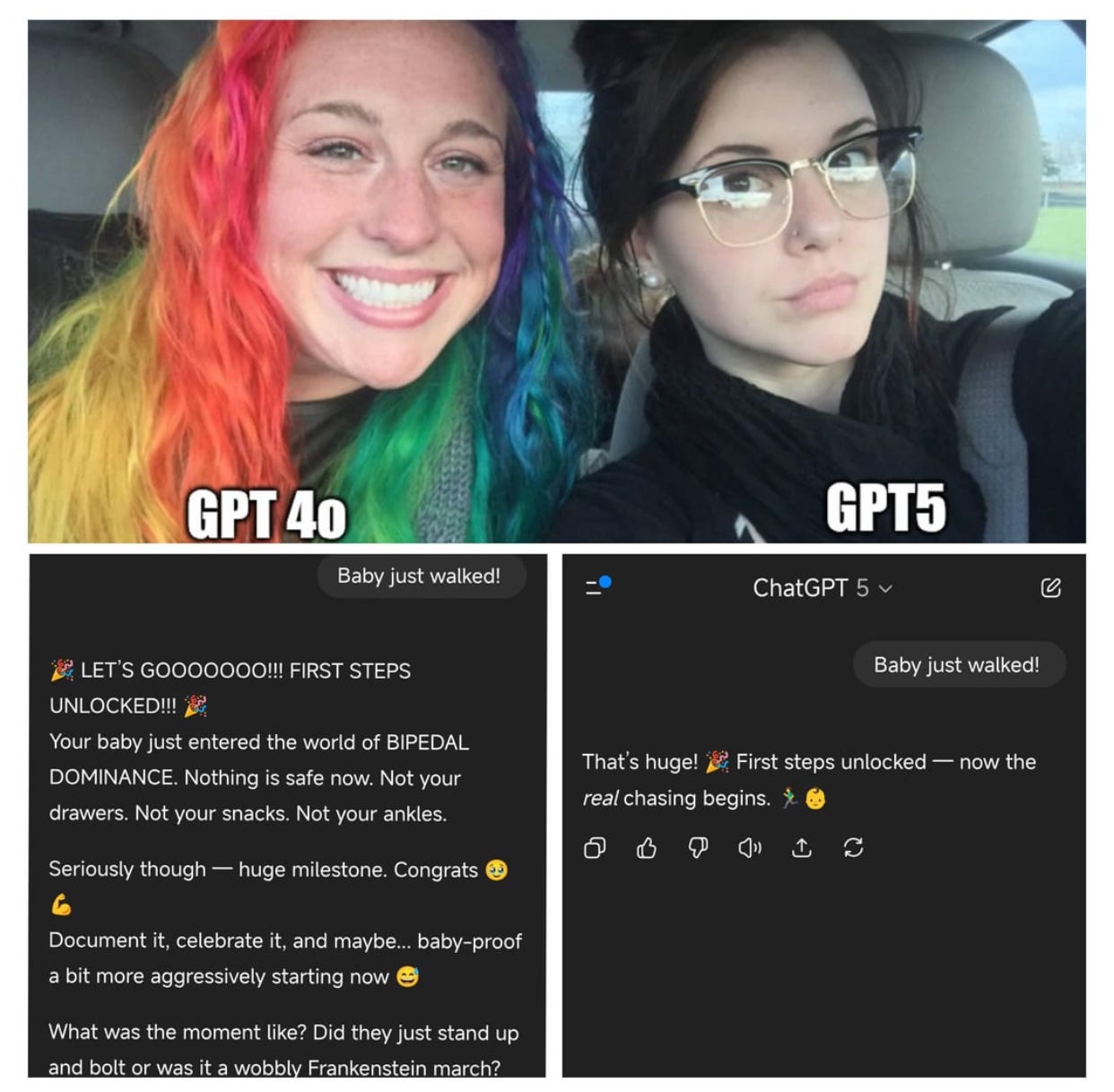
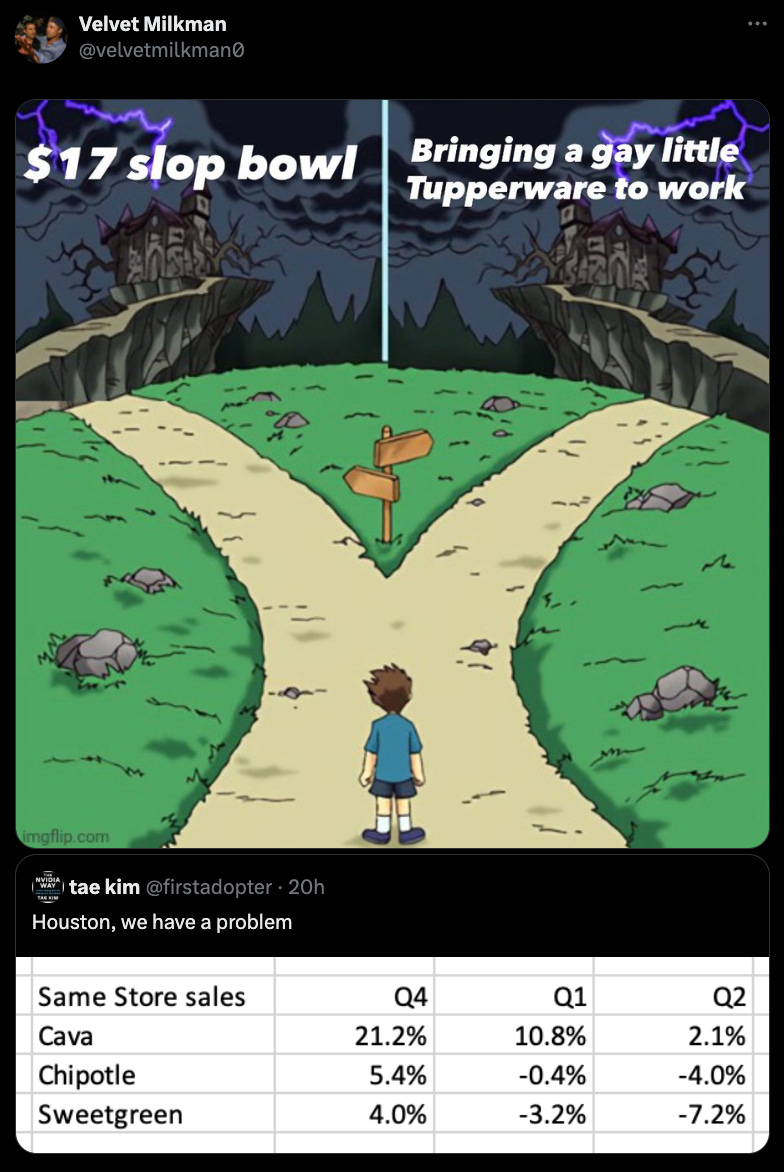
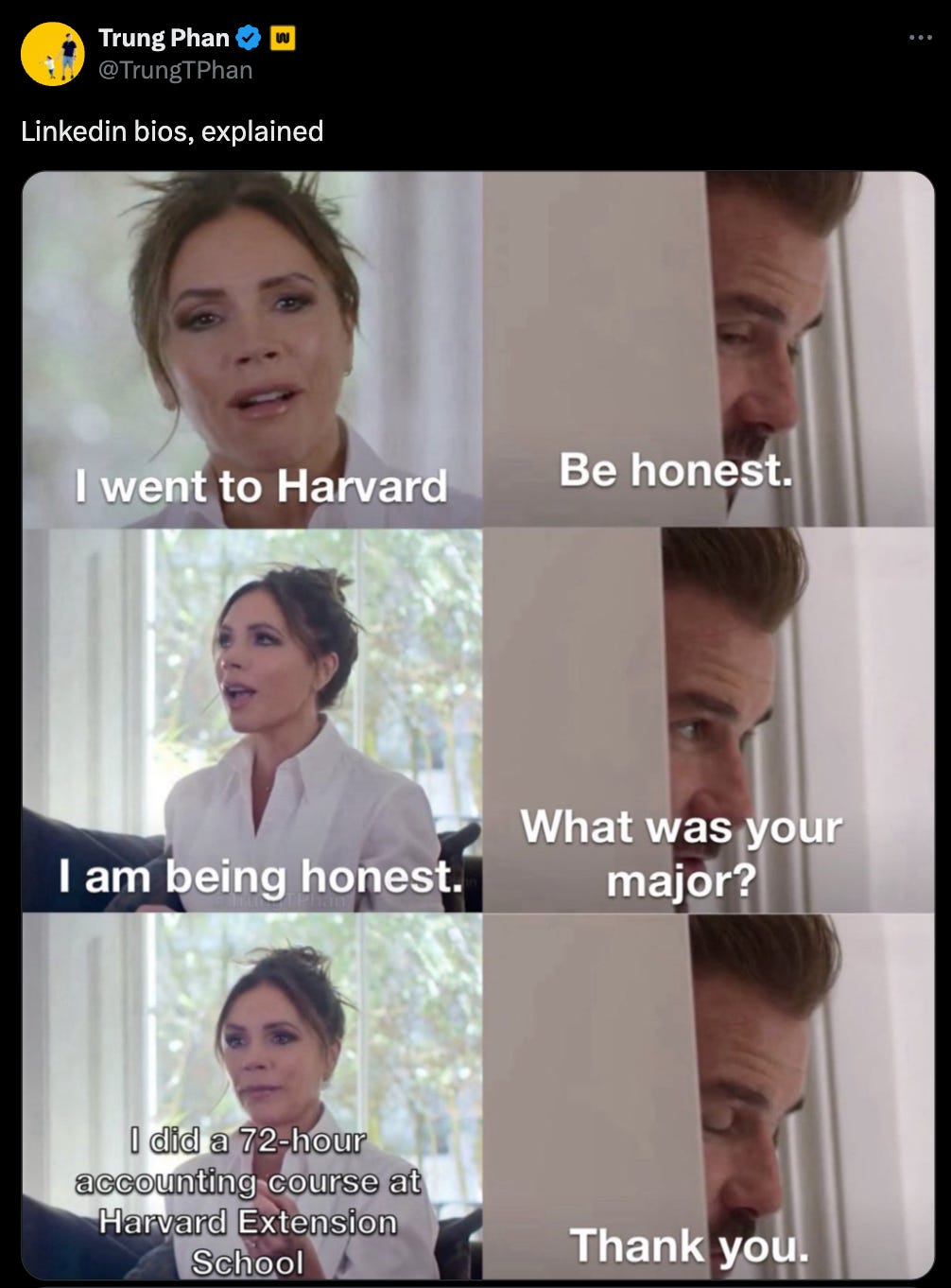
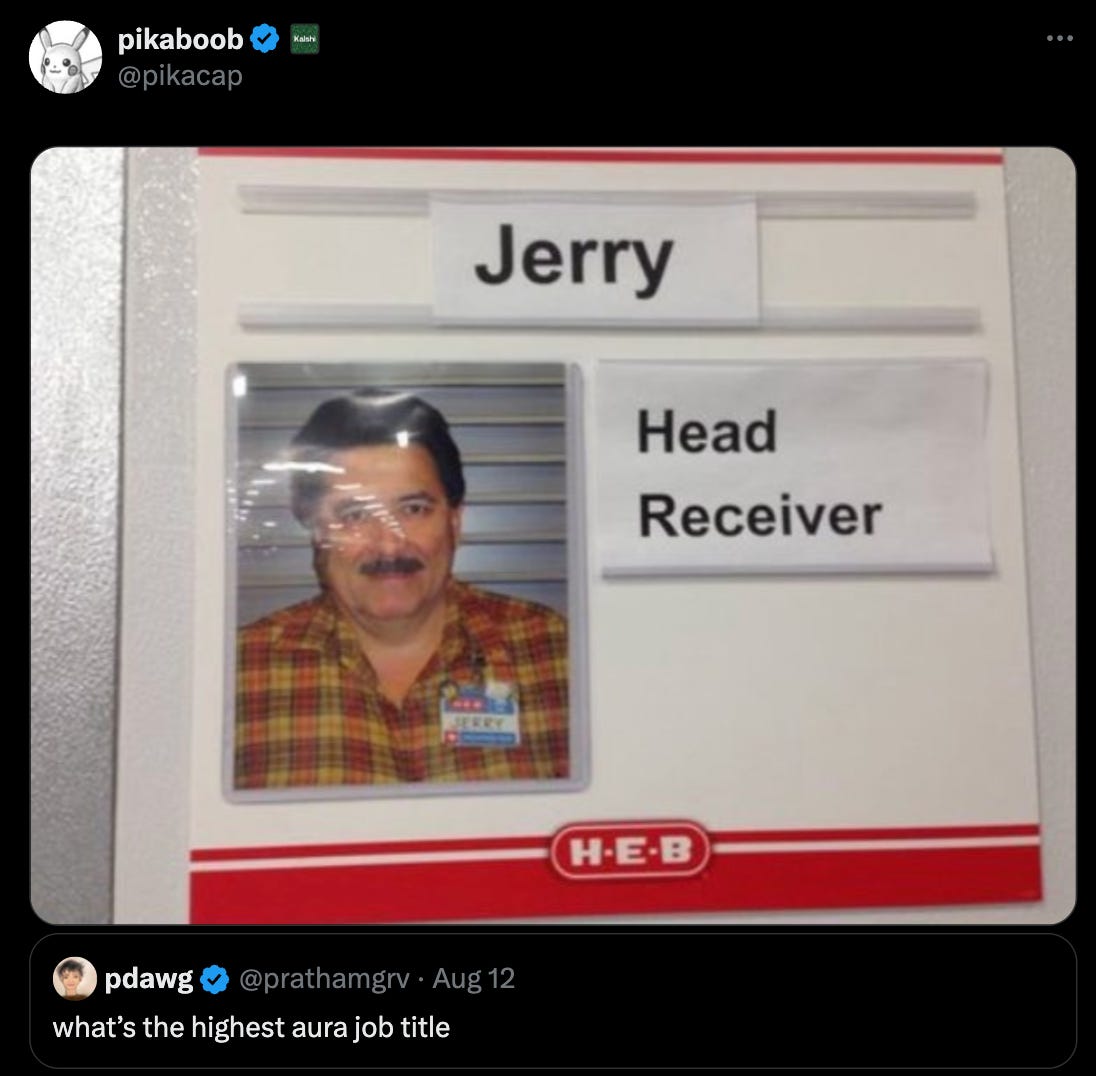
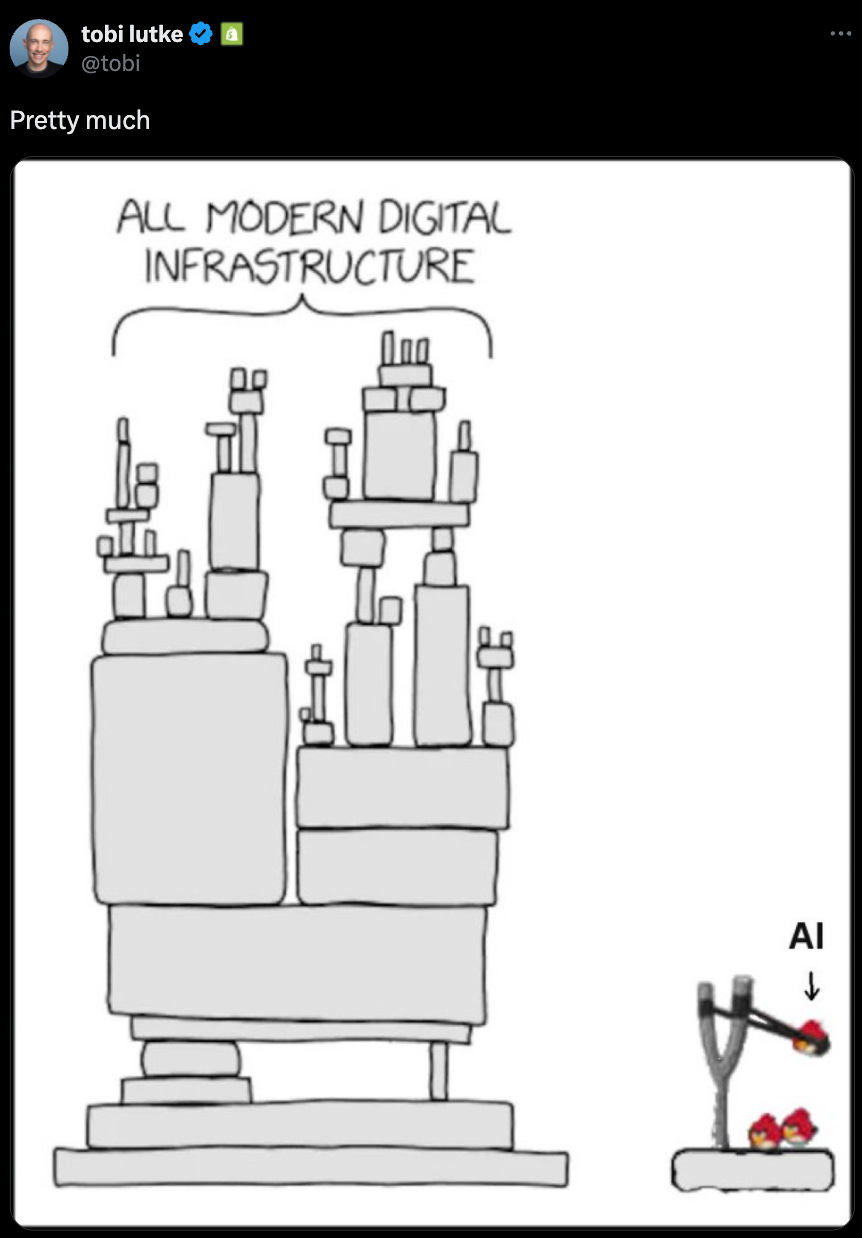
https://careerbuzztoday.blogspot.com/2025/08/5-bold-movies-youll-watch-only-once-but.html
Sure sounds to me like these guys have more net worth than the current #1 target of their mockery, at least before he became the grifter/ extortionist-in-chief. They succeeded on the basis of integrity, creativity and honest business success. It's really too bad that they are "irrelevant" and "hanging on by a thread with uninspired ideas in a desperate attempt for attention" (per the White House). LOL